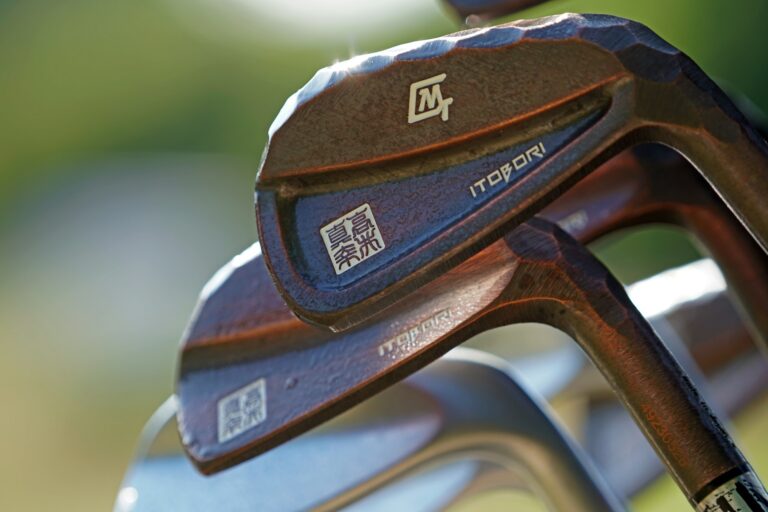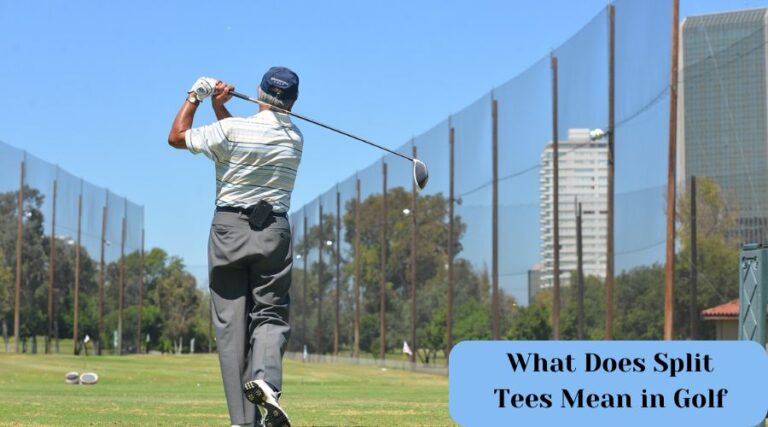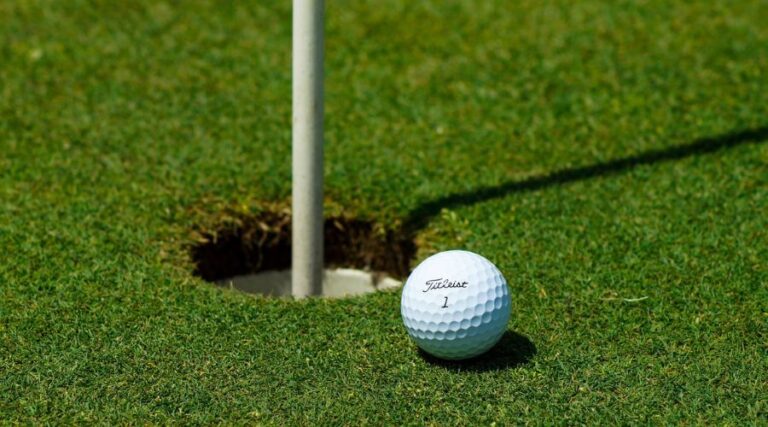A golf club is a tool used to hit the golf ball in the game of golf. It consists of a shaft, grip, and clubhead.
Golf clubs are essential for playing golf. They come in various types, including drivers, irons, wedges, and putters. Each type serves a specific purpose on the course. Drivers help achieve long-distance shots, while irons are versatile for various distances. Wedges are crucial for short, high-accuracy shots, and putters are used on the green to roll the ball into the hole.
Choosing the right golf club can significantly impact performance. Beginners often start with a basic set, while experienced players may customize their clubs for optimal results. Understanding each club’s function is key to improving your game.

Credit: www.waldorfastoriaorlando.com
Contents
Choosing The Right Golf Club
Choosing the right golf club can greatly improve your game. The right clubs will match your skill level and playing style. This guide will help you make an informed decision.
Types Of Golf Clubs
There are several types of golf clubs, each with a specific purpose:
- Woods: Used for long-distance shots. They have large heads and long shafts.
- Irons: Ideal for mid-range shots. They are numbered from 1 to 9.
- Hybrids: A mix of woods and irons. Easier to hit than long irons.
- Wedges: Used for short-distance, high-accuracy shots. Includes pitching, sand, and lob wedges.
- Putters: Designed for rolling the ball into the hole. Used on the green.
Factors To Consider
Choosing the right golf club involves considering several factors:
| Factor | Description |
|---|---|
| Skill Level | Beginners should use forgiving clubs. Advanced players can use specialized clubs. |
| Shaft Material | Steel shafts offer control. Graphite shafts provide more power. |
| Club Length | Choose a length that suits your height and swing style. |
| Clubhead Design | Larger clubheads are more forgiving. Smaller heads offer precision. |
Consider these factors to find the best golf clubs for your game. Each factor plays a vital role in performance and comfort.
Perfecting Your Grip
Getting the right grip on your golf club is crucial. It can improve your swing and boost your performance. A good grip is the foundation of a good game. Let’s dive into the details of perfecting your grip.
Grip Styles
There are three main grip styles in golf. Each style has its own benefits.
- Vardon Overlap Grip: This is the most common grip. The pinky finger of the trailing hand overlaps the index finger of the lead hand.
- Interlocking Grip: The pinky finger of the trailing hand interlocks with the index finger of the lead hand. This grip is popular with players with smaller hands.
- Ten-Finger Grip: Also known as the baseball grip. All ten fingers grip the club, ideal for beginners and players with arthritis.
Common Grip Mistakes
A poor grip can ruin your game. Here are some common mistakes to avoid:
- Gripping Too Tightly: This restricts movement and causes tension. Keep a relaxed grip for a fluid swing.
- Incorrect Hand Position: Ensure both hands are aligned correctly on the club. Misalignment leads to poor control and direction.
- Overlapping Fingers Incorrectly: Inconsistent overlapping can affect grip stability. Make sure fingers are properly overlapped or interlocked.
Mastering your grip takes practice. Start with these tips to enhance your game.
Stance And Posture
Mastering your stance and posture is crucial in golf. Proper stance ensures balance and control. Correct posture allows for a powerful and accurate swing. Let’s dive into the details.
Feet Positioning
Feet positioning is the foundation of your stance. Keep your feet shoulder-width apart. This provides stability and balance. Your weight should be evenly distributed. Avoid leaning too far forward or backward. Turn your front foot slightly outward. This helps in maintaining balance during the swing.
Body Alignment
Body alignment is key for a straight shot. Align your shoulders, hips, and feet. They should all be parallel to the target line. Keep your spine straight but relaxed. Avoid slouching or overly stiff posture.
| Element | Proper Alignment |
|---|---|
| Shoulders | Parallel to target line |
| Hips | Parallel to target line |
| Feet | Shoulder-width apart |
- Keep your knees slightly bent.
- Maintain a straight spine.
- Distribute your weight evenly.
- Ensure your shoulders are square.
Good alignment sets you up for success. Practice regularly to perfect your stance and posture.
Swing Mechanics
Mastering swing mechanics is key to improving your golf game. Proper technique ensures consistent and powerful shots. Let’s dive into two crucial components: the backswing and the follow-through.
Backswing Techniques
The backswing sets the stage for a successful shot. Follow these tips for an effective backswing:
- Keep your grip relaxed to maintain control and flexibility.
- Rotate your shoulders fully while keeping your lower body stable.
- Maintain a straight left arm to create a wider arc.
- Shift your weight to your back foot to generate power.
| Tip | Benefit |
|---|---|
| Relaxed Grip | Better control and flexibility |
| Full Shoulder Rotation | Increased power and accuracy |
| Straight Left Arm | Wider swing arc |
| Weight Shift | More power in the swing |
Follow-through Tips
The follow-through completes your swing and affects shot direction. Consider these tips:
- Maintain balance by keeping your head steady.
- Extend your arms fully towards the target.
- Finish high with your hands above your shoulders.
- Hold your finish to assess your swing alignment.
Implementing these follow-through tips improves shot consistency and direction.
Improving Accuracy
Golf is a game of precision. Improving accuracy is crucial for lowering your scores. This section will focus on techniques to enhance your accuracy on the course.
Aiming Strategies
Proper aiming is essential for accurate shots. Here are some tips:
- Align your body with the target. Ensure shoulders, hips, and feet are parallel.
- Pick a spot a few feet in front of the ball. Use it as a guide.
- Visualize the shot path before swinging. Picture the ball’s flight.
Consistency Drills
Consistency in your swing will improve accuracy. Try these drills:
- Alignment Drill: Place a club on the ground. Align feet, hips, and shoulders with it.
- One-Handed Swings: Practice swings with one hand. This improves control and balance.
- Slow-Motion Swings: Swing in slow motion. Focus on each part of the swing.
These drills help develop muscle memory. Consistent practice leads to better accuracy.
| Drill | Focus Area |
|---|---|
| Alignment Drill | Body Alignment |
| One-Handed Swings | Control and Balance |
| Slow-Motion Swings | Swing Mechanics |

Credit: www.seaisland.com
Increasing Distance
Increasing the distance your golf ball travels can improve your game. It helps you cover more ground with fewer strokes. Let’s explore ways to enhance your distance.
Power Generation
Generating power is key to hitting the ball farther. Focus on your stance and grip. A firm grip provides control and strength. Your stance should be balanced and stable.
Use your body to generate power. Rotate your hips and shoulders during the swing. This motion adds force to your shot.
Follow these tips to boost your power:
- Stand with feet shoulder-width apart.
- Grip the club firmly but not too tight.
- Rotate your hips and shoulders.
Club Head Speed
Increasing club head speed can help the ball travel farther. Use a lighter club for more speed. A lighter club is easier to swing faster.
Practice your swing regularly. Consistent practice improves your speed and accuracy. Focus on smooth and controlled swings.
Here are some tips for increasing club head speed:
- Use a lighter club.
- Practice smooth swings.
- Stay relaxed during your swing.
By focusing on power generation and club head speed, you can increase your distance in golf. Practice these techniques and enjoy the results.
Mental Game
The mental game in golf is as important as physical skills. A strong mind helps golfers stay focused and calm under pressure. Let’s explore some effective techniques to master the mental game.
Focus Techniques
Maintaining focus is crucial on the golf course. Here are some effective techniques:
- Visualization: Picture the perfect shot in your mind.
- Breathing Exercises: Deep breaths help calm the mind.
- Routine: Stick to a pre-shot routine for consistency.
Visualization helps golfers see the shot before taking it. Deep breathing helps keep nerves in check. A consistent routine builds confidence and reduces errors.
Handling Pressure
Pressure situations can make or break a game. Use these methods to handle pressure:
- Stay Positive: Focus on what you can control.
- Break Down Goals: Tackle the game one shot at a time.
- Accept Mistakes: Learn and move on from errors.
Staying positive keeps your mind clear and focused. Breaking down goals into smaller steps makes challenges manageable. Accepting mistakes helps you stay in the moment and improve.
| Technique | Benefit |
|---|---|
| Visualization | Improves accuracy and confidence |
| Deep Breathing | Reduces anxiety and stress |
| Pre-shot Routine | Builds consistency and focus |
| Positive Thinking | Enhances mental clarity |
| Goal Breakdown | Makes tasks less daunting |
| Accepting Mistakes | Encourages learning and resilience |
Practice Routines
Practicing regularly is key to improving your golf game. Effective practice routines can turn you into a skilled golfer. This section covers Effective Drills and Tracking Progress to help you practice better.
Effective Drills
Effective drills can help you master your golf skills. Here are some drills to include in your practice routine:
- Putting Drill: Place 5 balls in a circle around the hole, 3 feet away. Try to sink each putt.
- Chipping Drill: Set up targets at different distances. Practice hitting each target with different clubs.
- Driving Range Drill: Use different clubs to hit 10 balls each. Focus on accuracy and distance.
- Bunker Drill: Practice getting out of sand traps. Focus on different lies and distances.
Tracking Progress
Tracking your progress helps you see improvements and areas to work on. Use these methods to keep track:
| Method | Details |
|---|---|
| Scorecards | Record your scores after each round. Note the number of putts, fairways hit, and greens in regulation. |
| Practice Logs | Write down your drills and the number of successful attempts. Track your consistency over time. |
| Video Analysis | Record your swing and review it. Compare it to professional swings to find areas for improvement. |
| Coaching Feedback | Get feedback from a coach. Use their advice to adjust your practice routines. |
By following these tips, you can improve your golf skills. Consistent practice and tracking your progress will lead to better performance on the course.

Credit: www.tiburongolf.com
Frequently Asked Questions
What Are The Types Of Golf Clubs?
Golf clubs come in various types, including drivers, fairway woods, hybrids, irons, wedges, and putters. Each type serves a specific purpose. Drivers are for long-distance shots, while putters are for short, precise strokes on the green.
How To Choose The Right Golf Club?
Choosing the right golf club depends on your skill level, swing speed, and the type of shot. Beginners should start with a balanced set. Advanced players often customize their clubs for better performance.
What Is The Best Golf Club For Beginners?
For beginners, a hybrid club is often recommended. Hybrids combine the best features of irons and woods. They are easier to hit and control, making them ideal for new golfers.
How Often Should I Replace My Golf Clubs?
Golf clubs should be replaced every 3-5 years, depending on usage and wear. Regular players may need to replace them more frequently. Pay attention to the condition of the grips and clubfaces.
Conclusion
Choosing the right golf club can elevate your game significantly. Focus on quality, comfort, and performance. Test different clubs to find your perfect match. Investing time in selection pays off on the course. Remember, the right club makes a difference.
Happy golfing!





